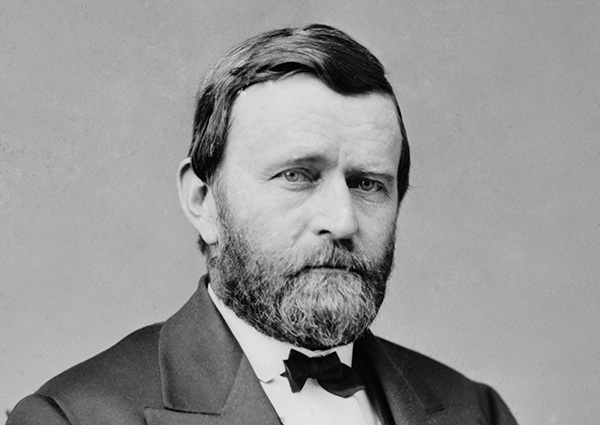Before ratification of the 22nd Amendment, only three presidents sought a third term in office, upsetting tradition and precedent that began with the Founding Fathers.
When George Washington was offered a third term as President of the United States he declined, opting to retire at Mount Vernon and setting a precedent followed well into the 20th Century. There were, however, third term considerations before Franklin Roosevelt was reelected in 1940 and again in 1944, the only president to be returned to office four times.
Election of 1876
The years of Reconstruction following the end of the Civil War exacerbated the acrimonious relationship between the Republican Party and white Democrats representing the “redeemed” states of the South. Even within Republican ranks, distinct rivalries had formed between the coalition supporting Maine’s James Blaine and New York’s Stalwart leader, Roscoe Conkling. In the middle lay the party reformers, mugwumps like Carl Schurz and Henry Adams.
In the midst of Republican infighting leading up to the national convention, President Ulysses Grant let it be known that he was open to serving a third term. This shocked even his closest advisors and friends. No president in the nation’s history had seriously considered or attempted a third term. Complicating the suggestion was the reality that the Grant administration’s many scandals had tainted the Republicans as the party of corruption.
The Republicans nominated three term Ohio Governor Rutherford B. Hayes as the dark horse candidate after multiple ballots failed to reward the front runners. Hayes became President after Republican Party Leadership brokered a “deal” with Southern Democrats in early 1877, awarding Hayes disputed electoral votes that should have gone to Samuel Tilden of New York. Hayes took the oath of office privately on a Saturday night during a White House reception while Grant was still President, before the public ceremony on the following Monday.
Election of 1912
Theodore Roosevelt sought to claim the Republican Party nomination in 1912 in direct opposition to William Howard Taft and became the first man to actively seek a third presidential term. Taft had distanced himself from Roosevelt’s progressives and formed close ties with the Old Guard Congressional Republicans. Roosevelt, still highly popular with the American people, challenged Taft’s renomination.
When Taft received the nomination, Roosevelt and the progressives bolted the party and formed a third party, the Progressive or “Bull Moose” Party. Splitting the Republican vote would pave the way for New Jersey Governor and former Princeton University professor and chancellor to win the election with less than half the popular vote but with 435 electoral votes out of 531. Had the Republican Party not split, Wilson would have lost.
Winning a Third Term
Franklin D. Roosevelt broke the precedent in 1940, winning a third term as President. Americans were unwilling to test Wendell Willkie. Roosevelt’s leadership during the early years of the Depression were viewed positively by many Americans and as war loomed in Europe and Asia, the public responded to FDR’s promise that he would not send American boys into a war. This became an impossible promise to keep after Pearl Harbor.
Summary
Though many presidents may have considered a third term, few actually expressed the intent. In 1904, Democratic leaders tried to tap former President Grover Cleveland but were unsuccessful. The Twenty-Second Amendment to the Constitution, adopted in 1951, ended any hopes of a third term. Under current law, it is possible to serve two terms and 2 years, assuming a vice president serves out a term with such service beginning one day less than half the term.








